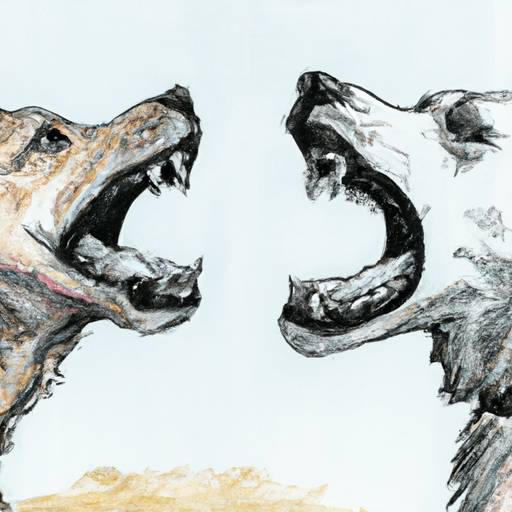Understanding why your dog growls is critical to ensuring their well-being and nurturing a strong bond between you two. This guide will empower you, the caregiver, with insights into why dogs growl, how to interpret different growls, and how to respond correctly.
Understanding Your Dog’s Growl
Dogs use growling as a form of communication. This vocalization can be a sign of various feelings:
- Fear
- Aggression
- Excitement
- Playfulness
Understanding the context of the growl can help you discern what your dog is trying to communicate.
Fear-Induced Growling
Dogs often growl when they’re scared. This is their way of saying, “I’m uncomfortable, and I need space.” The signs that your dog’s growling is fear-based often include:
- Tucked tail
- Ears flat against the head
- Avoiding eye contact
Aggression-Induced Growling
Aggression in dogs can stem from various sources such as territoriality, resource guarding, or frustration. An aggressive growl usually comes with:
- Stiff body posture
- Direct eye contact
- Raised hackles
Excitement and Playful Growling
Dogs also growl when they’re excited or playful. If your dog is bouncing around, wagging their tail, and growling, they’re likely in a playful mood. The associated behaviors include:
- Play bow (front end down, back end up)
- Loose, wagging tail
- Relaxed body and facial muscles
Responding to Dog Growling
How you react to your dog’s growling can have significant implications on your relationship with them. Here are some tips:
- Don’t Punish the Growl: Penalizing your dog for growling can create a communication gap and might lead to more serious issues like biting.
- Identify the Cause: Understanding why your dog is growling is key to addressing the problem.
- Seek Professional Help: If your dog exhibits aggressive growling, it’s best to consult with a professional trainer or a behaviorist.
Common Misconceptions About Dog Growling
There are several misconceptions about dog growling. Here are a few:
- Misconception: All dog growls are signs of aggression.
-
Reality: Dogs growl for various reasons, including fear, excitement, and playfulness.
-
Misconception: Punishing a growling dog will solve the problem.
- Reality: Punishing a growling dog can escalate the situation.
How to Prevent Growling
Preventing growling isn’t about stopping the vocalization but addressing the underlying cause. Here’s how:
- Socialize your dog to different environments.
- Train your dog using positive reinforcement methods.
- Ensure your dog gets plenty of physical and mental stimulation.
Frequently Asked Questions (FAQs)
Why does my dog growl when playing?
Growling during play is a normal behavior. It’s your dog’s way of expressing excitement and enjoyment.
What should I do if my dog growls at me?
Firstly, do not punish the growl. Try to identify the cause of the growl. If it’s fear or aggression-based, you might want to consider professional help.
Why does my dog growl at other dogs?
This could be a sign of fear, aggression, or excitement. Understanding the context and reading your dog’s body language will help identify the cause.
Why does my dog growl when I touch him?
If your dog growls when touched, it could be a sign of pain or discomfort. It’s worth getting them checked by a vet.
In conclusion, growling is a nuanced form of communication in dogs. Understanding it can vastly improve your relationship with your canine companion. Always remember, if you’re unsure or if the growling becomes problematic, don’t hesitate to seek professional help.



